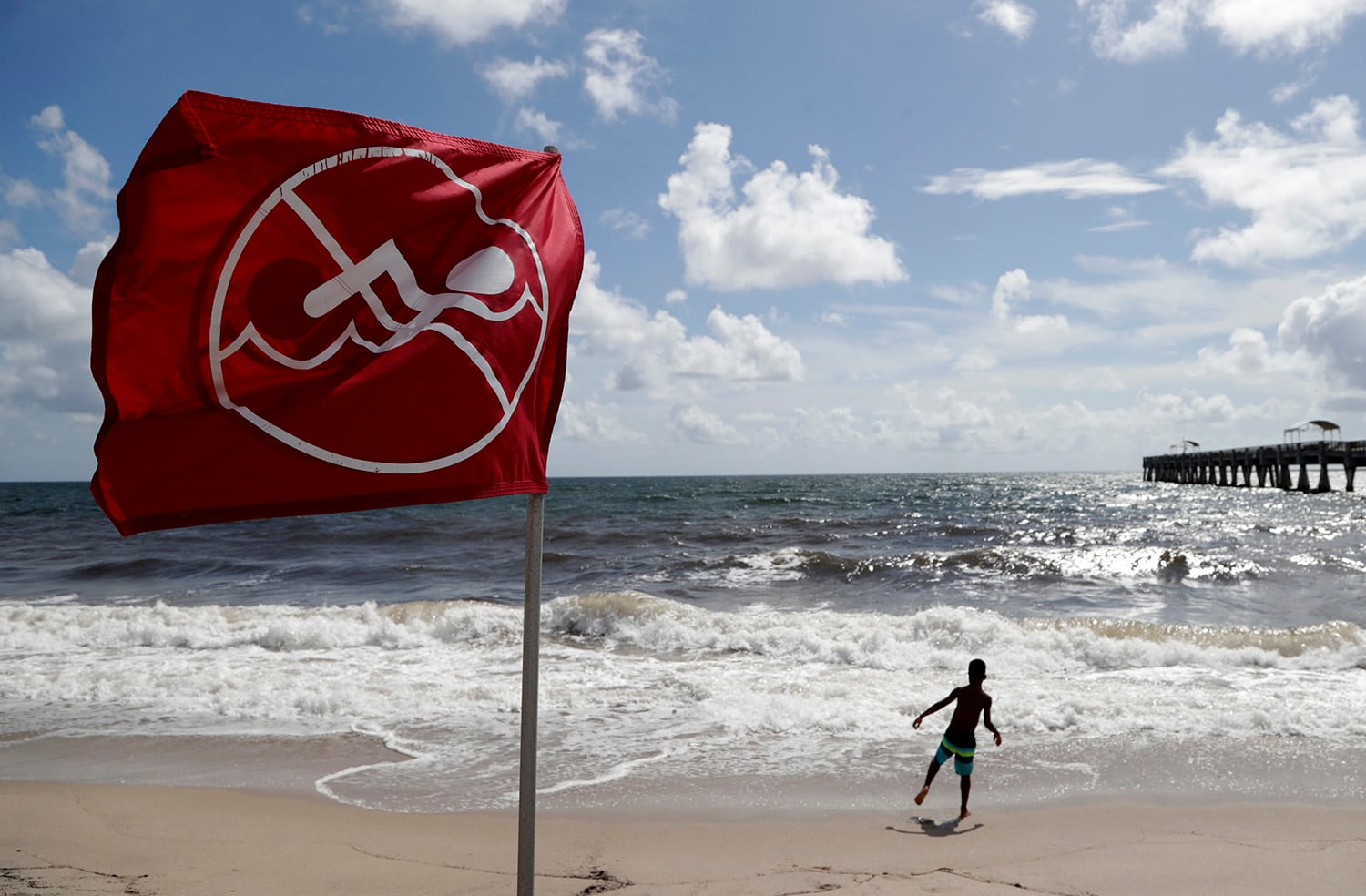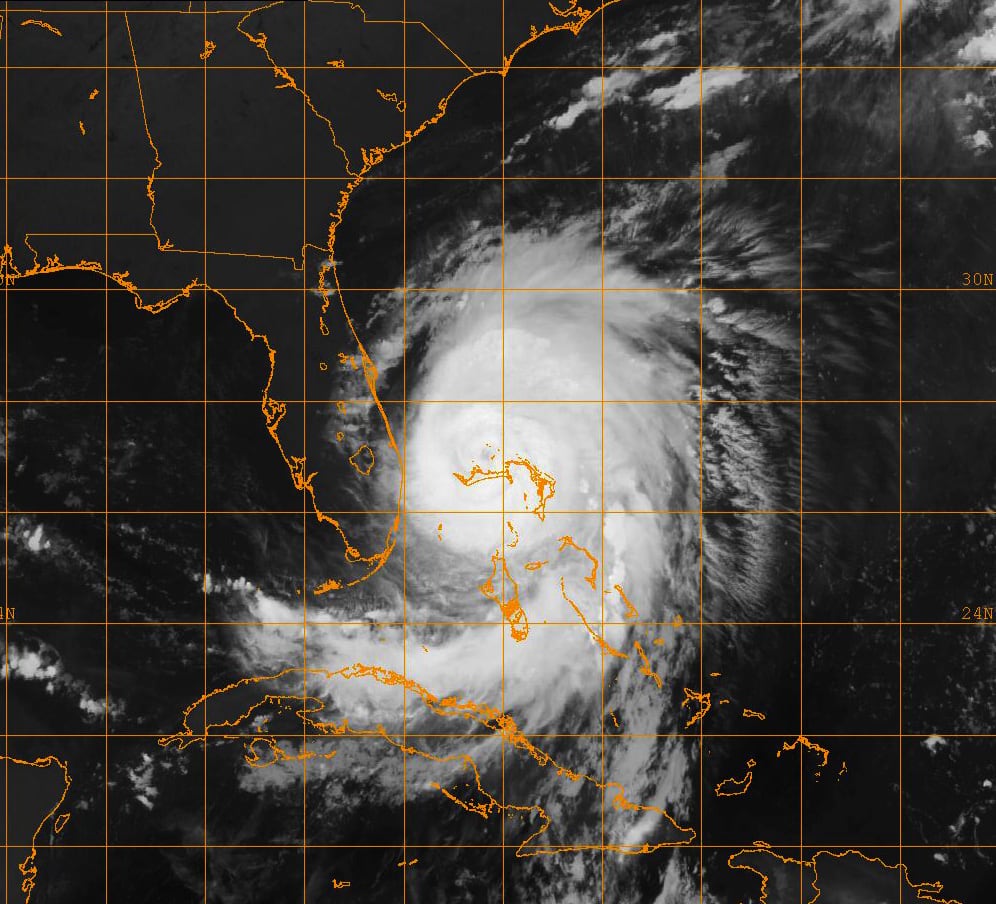As the coasts of Florida, Georgia and the Carolinas are bracing for possible storm surge from the now-Category 2 Hurricane Dorian, a military disaster response is already underway.
Florida-based Coast Guard aircrews ran a medical evacuation mission Monday, while about two dozen cutters gathered in Key West and more than 5,500 National Guardsmen moved to staging areas for possible storm response, according to news releases from the services.
“Even though the storm’s category has changed, it’s still a life-threatening storm, with high winds expected to affect Florida and the Carolinas over the next few days,” Pentagon spokesman Jonathan Hoffman told reporters in a briefing Tuesday. “Even without a landfall, there may be some significant impacts, which we’re preparing for.”
More than 4,000 National Guardsmen are pre-staged in Florida, according to U.S. Northern Command chief Air Force Gen. Terrence O’Shaughenessy, with another thousand or so activated throughout Georgia and South Carolina.
Those numbers could be in flux as the storm’s path shifts. As of midday Tuesday, the National Hurricane Center showed Dorian hitting Florida early Wednesday morning, before making its way to South Carolina.
“Florida is reevaluating as we speak, its posture, and its required force on duty,” National Guard Bureau chief Air Force Gen. Joseph Lengyel told Military Times.
And that state might make its personnel and assets available to its neighbors, he added.
“As this storm moves north, Georgia, South Carolina and North Carolina will, in succession — I believe ― add more forces to their National Guard structures that are in place,” Lengyel said.
On Monday, four MH-60 Jayhawk rescue helicopters from Coast Guard Air Station Clearwater made five medevac runs from Marsh Harbour, in the Bahamas’ Abaco Islands, to medical personnel at Nassau International Airport, according to a release, saving 19 in all.
Those aircrews had been pre-staged at Andros Island, Bahamas, the release said, and they planned to continue search and rescue efforts on Tuesday.
Bahamian Prime Minister Hubert Minnis announced Monday that at least five people had died in the Abaco Islands, the Associated Press reported, since Dorian hit the country’s 700-plus islands over the weekend.
Meanwhile, more than 20 cutters from Key West and Miami gathered in Key West over the weekend, “in preparation for deploying to Hurricane Dorian [affected] areas in the Florida and Bahamas,” according to a release.
Crews in Coast Guard Stations Mayport, Port Canaveral and Ponce De Leon Inlet also relocated response boats to a safe haven as part of preparation efforts on the eve of the storm making landfall in the United States, officials told Military Times.
Officials urged the public to follow all evacuation orders and to staff off the water until the hurricane passes.
The Coast Guard will continue to support the Bahamian National Emergency Management Agency and the Royal Bahamian Defense Force, they added.
RELATED

Previously a Category 5 storm with maximum winds clocked at 185 mph, Dorian stalled Monday night after moving through the Bahamas, and is now a Category 2 storm with sustained maximum winds of 110 mph, according to the National Hurricane Center.
On Tuesday morning, it was inching its way to Florida and expected to parallel the coasts of Georgia and South Carolina.
Fort Stewart, an Army post near Savannah, Georgia, evacuated Monday in anticipation, as did Marine Corps bases Parris Island and Beaufort Air Station, South Carolina.
In addition to National Guard assets, O’Shaughnessy said, about 2,700 active duty troops are also on call.
More than 40 helicopter crews from Fort Hood, Texas, traveled to Fort Rucker, Alabama, over the weekend. More than 80 high-water vehicles are ready to deploy from Fort Bragg, North Carolina, he added, in addition to search-and-rescue air assets from Moody Air Force Base, Georgia and Virginia’s Naval Station Norfolk.

Although the latest computer projections show the storm glancing the Hampton Roads area, the commander of the U.S. 2nd Fleet on Tuesday morning ordered “Sortie Condition Bravo,” a precautionary measure designed to move all Navy vessels and aircraft out of the hurricane’s path.
Then later in the evening, he changed the condition to Alpha.
“Based on the current track of the storm, we made the decision to begin to sortie our Hampton Roads-based ships and aircraft tomorrow,” said Vice Adm. Andrew Lewis in a prepared statement emailed to Military Times. “This allows time for our assets to transit safely out of the path of the storm.”
Ships will sortie from Naval Station Norfolk and Joint Expeditionary Base Little Creek and remain at sea until the storm subsides.
For those vessels unable to get underway because they’re undergoing maintenance, crews were ordered to take extra precautions to prevent them from being damaged, including adding mooring and storm lines, dropping anchor and disconnecting shore power cables, officials said.
Aircraft at Naval Station Norfolk’s Chambers Field and Naval Air Station Oceana will be secured in hangars that are rated to withstand high winds, while others will be flown to other locations to avoid the storm, they added.
In Norfolk, Rear Adm. Charles W. Rock, the Navy Region Mid-Atlantic commander, set “Tropical Cyclone Conditions of Readiness Three,” an order for all Hampton Roads installations to prep over the next two days for sustained destructive winds of greater than 50 knots.
That means sailors building sandbag barriers, removing debris from drainage areas and large items from the waterfront, topping off emergency generations with fuel and refilling potable water supplies to ride out a potential disaster.
“Our Navy remains prepared and ready to respond to evolving weather conditions, ensuring the safety of our service members and their families, and to protect our military assets and infrastructures,” said Rock in a statement.
“It is important that our Navy families are informed of all resources available to them and have a plan in the event Hurricane Dorian affects our Region.”
In South Carolina, Naval Hospital Beaufort commander Capt. Robert D. Jackson also ordered TCCOR 3. He encouraged non-essential personnel and their families to relocate to a safe haven within a 150-mile radius of Columbia. For those in Georgia, the safe haven radiates 150 miles out of Atlanta.
Uniformed evacuees will be placed in temporary duty status and civilian employees are granted administrative leave, according to his written instructions.

At Naval Submarine Base Kings Bay in Georgia, Navy leaders restricted access only to emergency responders, mission essential personnel and residents in barracks and base housing, according to the SUBASE’s official social media accounts.
Commanders ordered the fitness center, health clinic and restaurants on base to shutter until the storm has passed.
In Florida, a similar order was issued for Naval Air Station Jacksonville. Vessels had been steaming away from nearby homeports since Aug. 30, following an order from the 4th Fleet to sortie to safer waters in the Atlantic Ocean.
Navy Region Southeast commander Rear Adm. Gary Mayes on Tuesday afternoon also authorized the evacuation of Navy uniformed and civilian personnel and their families living in parts of Clay County.
He ordered active-duty personnel to consult with their parent commands about relocation and evacuation details.
The safe haven designation is within 150 miles of Tallahassee, which means evacuees can be reimbursed for lodging and per diem expenses incurred inside that radius.
In order to combat potential looting in the wake of the storm, civilian law enforcement authorities in St. Johns County announced a curfew beginning Tuesday at 8 p.m. for coastal areas, including St. Augustine, Flagler Estates and Hastings.
Meghann Myers is the Pentagon bureau chief at Military Times. She covers operations, policy, personnel, leadership and other issues affecting service members.
Prine came to Navy Times after stints at the San Diego Union-Tribune and Pittsburgh Tribune-Review. He served in the Marine Corps and the Pennsylvania Army National Guard. His awards include the Joseph Galloway Award for Distinguished Reporting on the military, a first prize from Investigative Reporters & Editors and the Combat Infantryman Badge.




